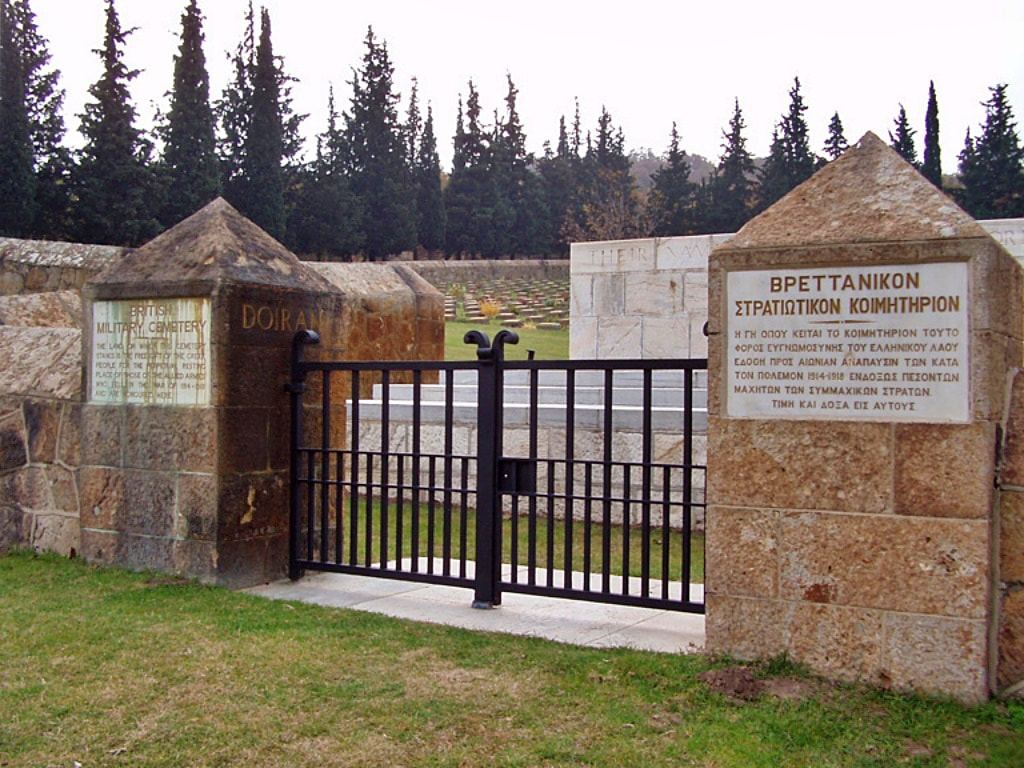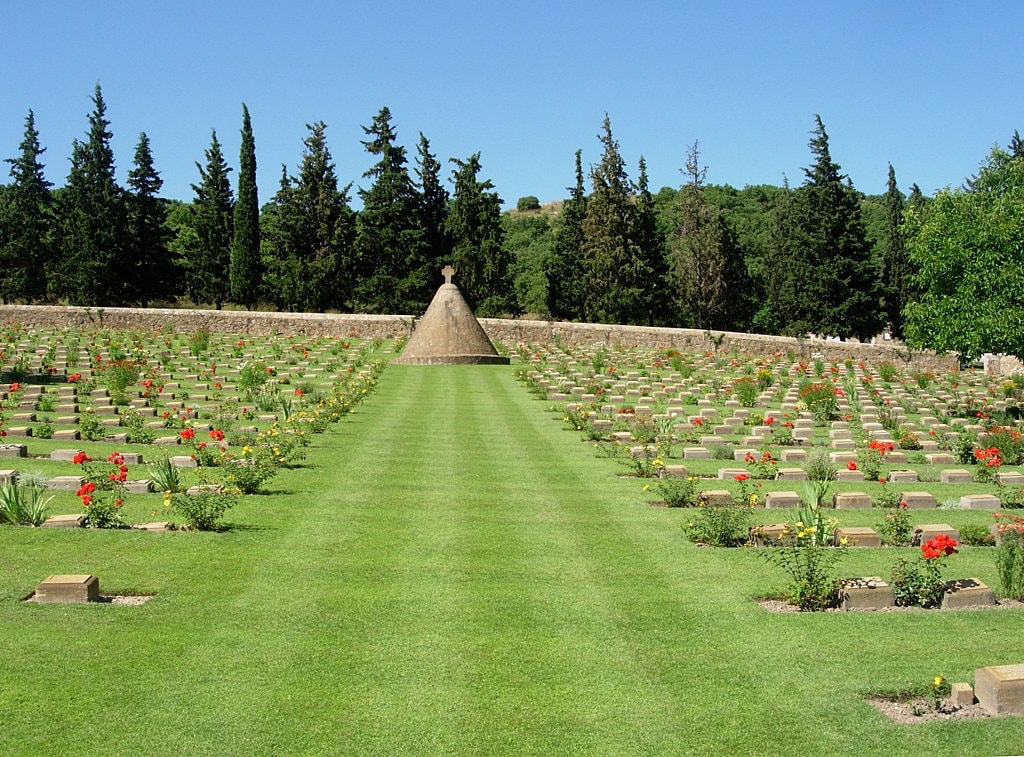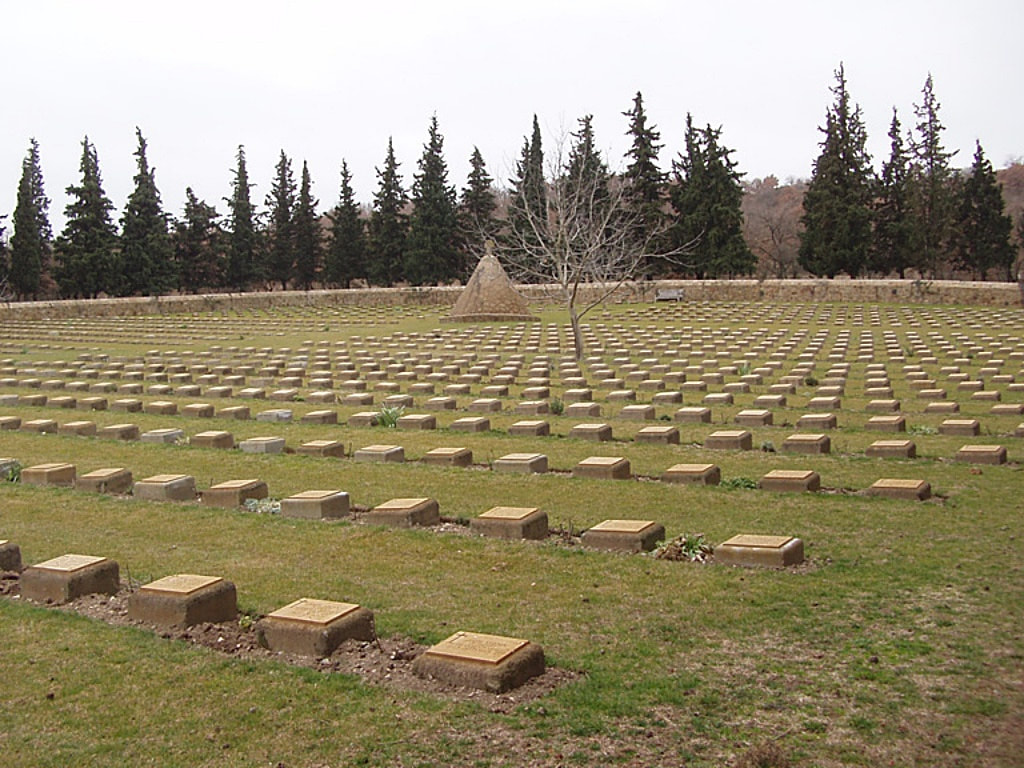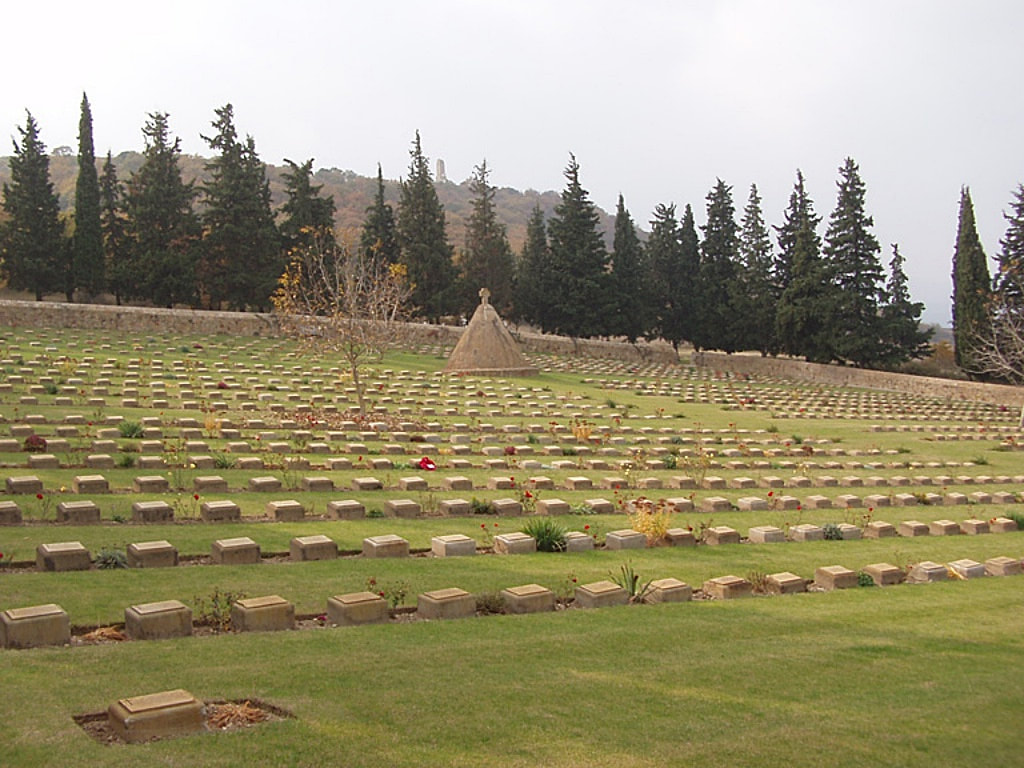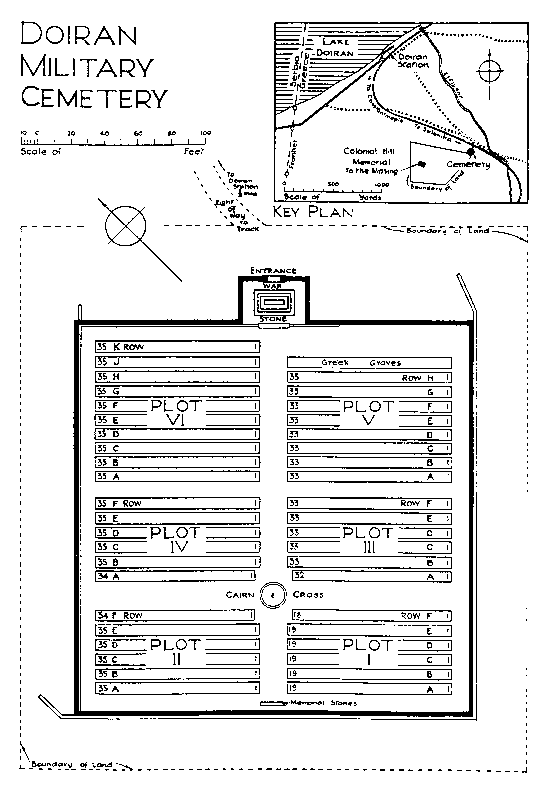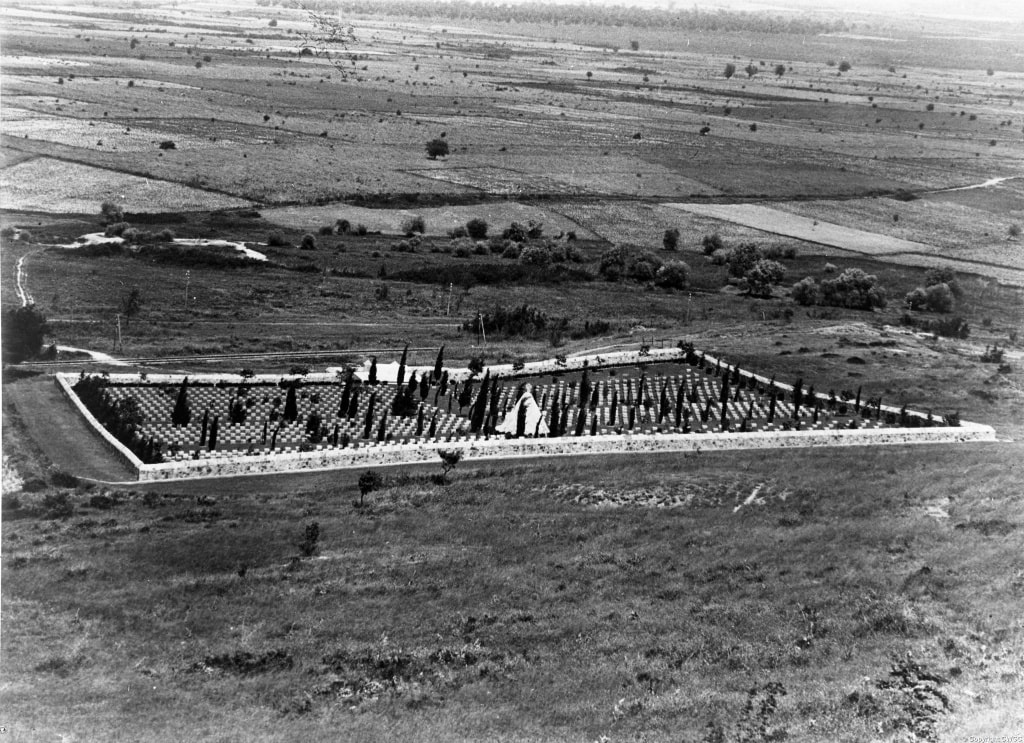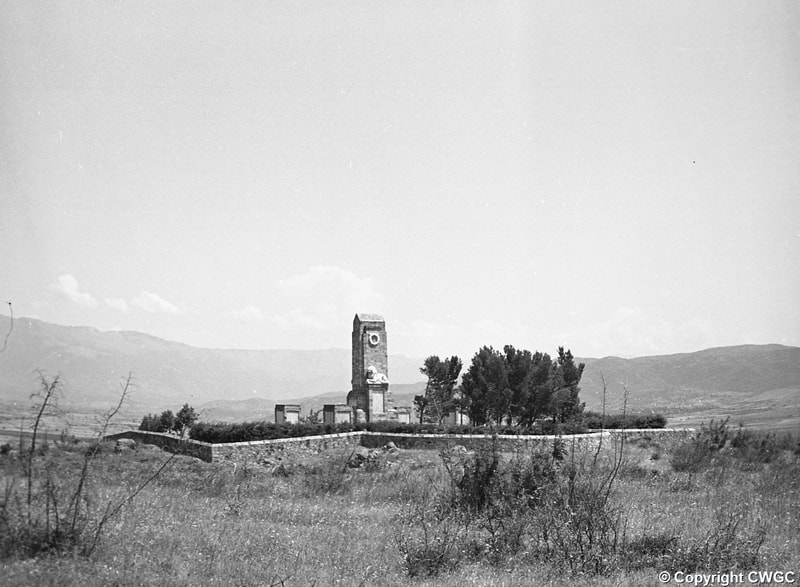DOIRAN MILITARY CEMETERY
Lake Doiran
Greece
GPS Coordinates: Latitude: 41.1696, Longitude: 22.76776
Location Information
Doiran Military Cemetery is situated in the north of Greece close to the Macedonia border and near the south-east shore of Lake Doiran. It is approximately 2 kilometres north west of Drossato village behind and to the west of Doirani village and is reached via a farm track.
From Thessaloniki take the Thessaloniki – Kilkis National Road north for approximately 70 km following the directions for the town of Kilkis until you come to a crossroads with the town of Drossato on your right. Turn left at this crossroad following the signs for Doirani Village/Lake and Customs. Continue on this road for approximately 2 km where you shall pick up the CWGC signs on the outskirts of the village that shall lead you around the village of Doirani and to the cemetery.
The Doiran Memorial, is on what was called Colonial Hill, it can be seen from a distance and is clearly signposted.
Visiting Information
The Cemetery is permanently open and may be visited at any time.
Historical Information
The cemetery (originally known as Colonial Hill Cemetery No.2) was formed at the end of 1916 as a cemetery for the Doiran front. The graves are almost entirely those of officers and men of the 22nd and 26th Divisions and largely reflect the fighting of April and May 1917 (the attacks on the Petit-Couronne), and 18-19 September 1918 (the attacks on Pip Ridge and the Grand-Couronne). In October and November 1918, after the final advance, a few burials took place from the 25th Casualty Clearing Station.
After the Armistice, graves were brought into the cemetery from the battlefields and from by some small burial grounds, the most important of which was Strumnitza British Military Cemetery, north-west of Doiran, made by the 40th Casualty Clearing Station in October and November 1918.
DOIRAN MILITARY CEMETERY now contains 1,338 Commonwealth burials of the First World War, 449 of them unidentified. There are also one French and 45 Greek war graves.
Total Burials: 1,393.
Identified Commonwealth Burials: United Kingdom 888, India 1. Total 889.
Unidentified Commonwealth Burials: 449.
Other Nationalities: Greece 45, France 1. Total 46.
The DOIRAN MEMORIAL which stands near the cemetery, serves the dual purpose of Battle Memorial of the British Salonika Force (for which a large sum of money was subscribed by the officers and men of that force), and place of commemoration for 2,173 Commonwealth servicemen who died in Macedonia and whose graves are not known.
Commemorated on Memorial: United Kingdom 2,173.
The cemetery and memorial was designed by Sir Robert Lorimer with sculpture by Walter Gilbert.
Images in gallery below used with the permission of the Commonwealth War Graves Commission
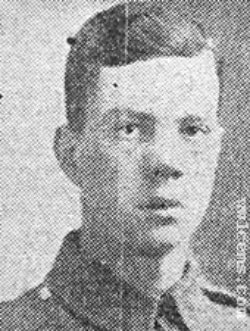
36688 Private
Albert Bowling
2nd Kings Own Royal Lancaster Regiment
Died of pneumonia 20th October 1918, aged 19.
Plot VI. K. 8.
Son of John William and Emily Bowling, of 15, Wren St., Burnley.
Albert Bowling
2nd Kings Own Royal Lancaster Regiment
Died of pneumonia 20th October 1918, aged 19.
Plot VI. K. 8.
Son of John William and Emily Bowling, of 15, Wren St., Burnley.
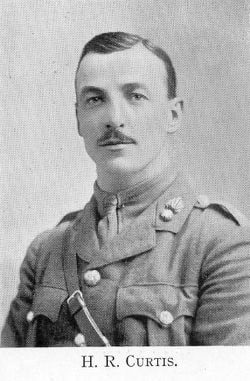
Major
Harry Reginald Curtis
11th Bn. Royal Welsh Fusiliers
18th September 1918, aged 31.
Plot V. D. 17.
Eldest son of Henry Levi and Mary Matilda Curtis, of Barrowden, Stamford, Lincs. Two of his brothers were killed in the War. Born at Easton, Stamford, Lincs. Albert Howell died on 4th August 1916, aged 23 and is buried in Varennes Military Cemetery in France and Horace died on 7th August 1915, aged 26 and he is commemorated on the Helles Memorial at Gallipoli.
His headstone bears the inscription "His Loving Care For His Dear Ones Was As His Daily Bread R. I. P."
The information below supplied by 'The Ellesmerian Club', the alumni organisation for Ellesmere College where Harry was a pupil.
Harry Reginald Curtis
11th Bn. Royal Welsh Fusiliers
18th September 1918, aged 31.
Plot V. D. 17.
Eldest son of Henry Levi and Mary Matilda Curtis, of Barrowden, Stamford, Lincs. Two of his brothers were killed in the War. Born at Easton, Stamford, Lincs. Albert Howell died on 4th August 1916, aged 23 and is buried in Varennes Military Cemetery in France and Horace died on 7th August 1915, aged 26 and he is commemorated on the Helles Memorial at Gallipoli.
His headstone bears the inscription "His Loving Care For His Dear Ones Was As His Daily Bread R. I. P."
The information below supplied by 'The Ellesmerian Club', the alumni organisation for Ellesmere College where Harry was a pupil.
Before he joined the Staff at Ellesmere College, Harry Reginald Curtis led a very active life at another Woodard School, St. Saviour’s, Ardingly, from 1910 to 1912. He played in their orchestra, took part in their drama productions and was active with the Officer Training Corps. In April 1911 he attended a course of instruction at Victoria Barracks, Portsmouth. His ‘Industry’, ‘General Ability and Intelligence’ and ‘Standard of Proficiency’ were all categorised at “Very Good”.
He left Ardingly to take up an appointment as Second Master on board the White Star Cadet Training Ship ”Mersey”, but he only remained there for one year as he was in Ellesmere by September 1913.
Harry was first mentioned as being at Ellesmere College in the London Gazette for 29th September 1913 when, as 2nd Lieutenant, he was appointed to serve with the Ellesmere College Contingent, Junior Division O.T.C. of which he became the Commanding Officer.
His parents, Henry Levi and Mary Matilda lived at Barrowden, Stamford, Lincolnshire and he was born at Easton, Stamford on 28th January 1887. He had three brothers, Horace, Albert and William, and three sisters, Alice, Ada and Phyllis. Horace and Albert also lost their lives in the Great War.
Harry taught Shorthand and Drawing at Ellesmere and, in the Kalendar for 1915, he is shown to have an Inter-Bachelor of Arts Degree from London University. His leadership of the Corps was praised in the Headmaster’s Speech of 1914 where it is recorded that: “The Corps, under the zealous and able leadership of Lieutenant Curtis, had reached a very high standard of efficiency and had received warm commendations at the recent inspections”.
Harry was also praised for decorating the “big drum in a masterly manner”. He was heavily involved in the Debating Society, organised a boxing tournament and played in various hockey and football games.
During his time at Ellesmere, Harry completed the three stages necessary to become a Freemason, his Mother Lodge being Brownlow No. 2131. The war interrupted his progression through the Lodge.
Late in 1914, Harry left Ellesmere and took up a commission with the 12th Battalion, the Royal Welsh Fusiliers who were then stationed at Wrexham. He embarked for service overseas at Folkestone on 5th September 1915 and served in France until the end of October when he sailed from Marseilles to join The Mesopotamian Expeditionary Force in Salonika.
He was wounded on 4th June 1916 and was treated at the 67th Field Ambulance, No. 31 Casualty Clearing Station and No. 29 General Hospital. Three weeks later he re-joined his unit.
At the end of October, having served as an acting Major, he became temporary Major whilst second in command of a Company. July 1917 saw him attend a two week long course at XII Corps, School of Instruction. September saw him at 22 Division Gas School.
In early 1918 he was granted a period of leave during which he returned to England. He returned to his unit at the end of March.
Harry’s regiment in Salonika was fighting alongside the Greeks against the Bulgarians. In the early hours of 18th September 1918 both forces began a determined offensive against the enemy’s positions. Harry died in action that day.
A detailed account of the operation is recorded in “Under the Devil’s Eye’ (Authors: Alan Wakefield & Simon Moody). Several Ellesmerians who would have been familiar to Harry were, unbeknownst to him, involved in this and similar operations with their units in the immediate vicinity at the same time:
“At 0508hrs on 18 September 1918, the men of 66th and 67th Brigades along with those of the 'Seres' Division went over the top. The Greeks quickly overran the Bulgarian front line, capturing all positions between 0100 and 0500, including Petit Couronne. By 0700hrs they had secured Hill 340, Teton Hill and Doiran Hill in the Bulgarian second line. One regiment then pushed on to assault The Orb, a strongpoint in the enemy third line guarding the approach to Grand Couronne. Suffering heavy casualties and under pressure from Bulgarian counter attacks the Greeks were forced back to the line they had earlier consolidated. While the 'Seres' Division was making great progress, 67th Brigade on its right, attacked enemy positions between 0.6 and Sugar Loaf. The 11th Royal Welsh Fusiliers moved against 0.6, ‘B’ Coy reaching this point in 10 minutes having encountered little opposition. Once in occupation this Coy came under heavy fire and was strongly counter attacked. Although they continued to hold, casualties mounted and it was with relief that contact was established with troops of the 'Seres' Division at 0600hrs. By the time men of ‘D’ Coy had also reached 0.6, having suffered heavy casualties during their advance and in fighting off a counter attack. With the first objective secured, the battalion's two remaining companies advanced against a hilltop strongpoint in the enemy second line known as The Hilt. ‘A’ and ‘C’ Companys passed through the first belt of enemy wire according to the timetable and then had to adjust box respirators. In the assault on THE HILT very strong opposition was met so only a very few men under Major CURTIS were able to reach the objective. A very heavy machine gun and trench mortar fire was encountered from SQUIRREL WOOD and a counter attack forced the men who had occupied THE HILT trenches to withdraw. All the officers had become casualties".
The War Diary for the 11th Battalion, the Royal Welsh Fusiliers records:
” Major Curtis was one of the officers who became casualties. "
A brother officer wrote:
“An attack was planned on the whole of the Bulgar position. Our division, in co-operation with our Greek troops, was given the very difficult task of attacking the position known as the Grand Couronne and the ‘P’ Ridge, just west of Lake Dojran. This position in itself was an extremely strong one. In addition, the Bulgars had brought up very heavy reinforcements to this sector as they apparently expected a very strong attack here. Our Battalion was given two objectives. The capture of the foremost of these was entrusted to Major Curtis who had two companies under his command for this purpose. Very strong opposition was met; the enemy artillery, trench mortar, and machine gun fire was extremely heavy. The result was that although the objectives were reached, the casualties were so great that the first attacking force was unable to retain possession of the positions they had won by such heroic efforts. It was in this attack that Major Curtis was killed by a trench mortar shell. He had worked hard in getting out the details, and led his men to the attack in a most gallant manner and was a great example to them. The fact that we were keeping engaged heavy enemy forces made the attack on other parts of the line easier, with the result that the Serbs were able to push right through. The final result was that the position of the main Bulgarian Army was so serious that they had no option but to surrender, and there is no doubt that the Bulgarian collapse considerably hastened the collapse of the central powers.”
Harry was buried in Doiran Military Cemetery, about one mile west of where he lost his life. He was awarded the Victory Medal, the British War Medal and the 1914-915 Star.
His Colonel wrote to his parents:
“Your son, Major Curtis, was killed gallantly leading his men against a very strong position held in considerable force by the Bulgars. I have always found your son to be a most conscientious man who worked very hard for the good of his regiment and country. . . “
The Chaplain also wrote to the family:
”I am very sorry you have not had some news before this regarding your son, Major Curtis. The movements of troops and the number of casualties must form some excuse. Major Curtis went over leading his men at dawn, Sept. 18th. He was first wounded in the arm but kept on. He was then wounded in the leg but still kept on, and was killed soon after by a trench mortar shell. He is buried where he fell on a hill named "The Hilt," about one mile west of Doiran Town. His name is inserted over his grave, and the number of the registration peg is C 79.He is very much regretted and held up to admiration as a gallant soldier. I knew him very well and held a very keen appreciation of his many gifts of mind and heart. I have no words to express my sympathy with you in your repeated losses, but I pray that God may comfort you and that you may find some consolation in thinking that your dear boy died a very gallant death and leaves behind him a noble memory”.
He left Ardingly to take up an appointment as Second Master on board the White Star Cadet Training Ship ”Mersey”, but he only remained there for one year as he was in Ellesmere by September 1913.
Harry was first mentioned as being at Ellesmere College in the London Gazette for 29th September 1913 when, as 2nd Lieutenant, he was appointed to serve with the Ellesmere College Contingent, Junior Division O.T.C. of which he became the Commanding Officer.
His parents, Henry Levi and Mary Matilda lived at Barrowden, Stamford, Lincolnshire and he was born at Easton, Stamford on 28th January 1887. He had three brothers, Horace, Albert and William, and three sisters, Alice, Ada and Phyllis. Horace and Albert also lost their lives in the Great War.
Harry taught Shorthand and Drawing at Ellesmere and, in the Kalendar for 1915, he is shown to have an Inter-Bachelor of Arts Degree from London University. His leadership of the Corps was praised in the Headmaster’s Speech of 1914 where it is recorded that: “The Corps, under the zealous and able leadership of Lieutenant Curtis, had reached a very high standard of efficiency and had received warm commendations at the recent inspections”.
Harry was also praised for decorating the “big drum in a masterly manner”. He was heavily involved in the Debating Society, organised a boxing tournament and played in various hockey and football games.
During his time at Ellesmere, Harry completed the three stages necessary to become a Freemason, his Mother Lodge being Brownlow No. 2131. The war interrupted his progression through the Lodge.
Late in 1914, Harry left Ellesmere and took up a commission with the 12th Battalion, the Royal Welsh Fusiliers who were then stationed at Wrexham. He embarked for service overseas at Folkestone on 5th September 1915 and served in France until the end of October when he sailed from Marseilles to join The Mesopotamian Expeditionary Force in Salonika.
He was wounded on 4th June 1916 and was treated at the 67th Field Ambulance, No. 31 Casualty Clearing Station and No. 29 General Hospital. Three weeks later he re-joined his unit.
At the end of October, having served as an acting Major, he became temporary Major whilst second in command of a Company. July 1917 saw him attend a two week long course at XII Corps, School of Instruction. September saw him at 22 Division Gas School.
In early 1918 he was granted a period of leave during which he returned to England. He returned to his unit at the end of March.
Harry’s regiment in Salonika was fighting alongside the Greeks against the Bulgarians. In the early hours of 18th September 1918 both forces began a determined offensive against the enemy’s positions. Harry died in action that day.
A detailed account of the operation is recorded in “Under the Devil’s Eye’ (Authors: Alan Wakefield & Simon Moody). Several Ellesmerians who would have been familiar to Harry were, unbeknownst to him, involved in this and similar operations with their units in the immediate vicinity at the same time:
“At 0508hrs on 18 September 1918, the men of 66th and 67th Brigades along with those of the 'Seres' Division went over the top. The Greeks quickly overran the Bulgarian front line, capturing all positions between 0100 and 0500, including Petit Couronne. By 0700hrs they had secured Hill 340, Teton Hill and Doiran Hill in the Bulgarian second line. One regiment then pushed on to assault The Orb, a strongpoint in the enemy third line guarding the approach to Grand Couronne. Suffering heavy casualties and under pressure from Bulgarian counter attacks the Greeks were forced back to the line they had earlier consolidated. While the 'Seres' Division was making great progress, 67th Brigade on its right, attacked enemy positions between 0.6 and Sugar Loaf. The 11th Royal Welsh Fusiliers moved against 0.6, ‘B’ Coy reaching this point in 10 minutes having encountered little opposition. Once in occupation this Coy came under heavy fire and was strongly counter attacked. Although they continued to hold, casualties mounted and it was with relief that contact was established with troops of the 'Seres' Division at 0600hrs. By the time men of ‘D’ Coy had also reached 0.6, having suffered heavy casualties during their advance and in fighting off a counter attack. With the first objective secured, the battalion's two remaining companies advanced against a hilltop strongpoint in the enemy second line known as The Hilt. ‘A’ and ‘C’ Companys passed through the first belt of enemy wire according to the timetable and then had to adjust box respirators. In the assault on THE HILT very strong opposition was met so only a very few men under Major CURTIS were able to reach the objective. A very heavy machine gun and trench mortar fire was encountered from SQUIRREL WOOD and a counter attack forced the men who had occupied THE HILT trenches to withdraw. All the officers had become casualties".
The War Diary for the 11th Battalion, the Royal Welsh Fusiliers records:
” Major Curtis was one of the officers who became casualties. "
A brother officer wrote:
“An attack was planned on the whole of the Bulgar position. Our division, in co-operation with our Greek troops, was given the very difficult task of attacking the position known as the Grand Couronne and the ‘P’ Ridge, just west of Lake Dojran. This position in itself was an extremely strong one. In addition, the Bulgars had brought up very heavy reinforcements to this sector as they apparently expected a very strong attack here. Our Battalion was given two objectives. The capture of the foremost of these was entrusted to Major Curtis who had two companies under his command for this purpose. Very strong opposition was met; the enemy artillery, trench mortar, and machine gun fire was extremely heavy. The result was that although the objectives were reached, the casualties were so great that the first attacking force was unable to retain possession of the positions they had won by such heroic efforts. It was in this attack that Major Curtis was killed by a trench mortar shell. He had worked hard in getting out the details, and led his men to the attack in a most gallant manner and was a great example to them. The fact that we were keeping engaged heavy enemy forces made the attack on other parts of the line easier, with the result that the Serbs were able to push right through. The final result was that the position of the main Bulgarian Army was so serious that they had no option but to surrender, and there is no doubt that the Bulgarian collapse considerably hastened the collapse of the central powers.”
Harry was buried in Doiran Military Cemetery, about one mile west of where he lost his life. He was awarded the Victory Medal, the British War Medal and the 1914-915 Star.
His Colonel wrote to his parents:
“Your son, Major Curtis, was killed gallantly leading his men against a very strong position held in considerable force by the Bulgars. I have always found your son to be a most conscientious man who worked very hard for the good of his regiment and country. . . “
The Chaplain also wrote to the family:
”I am very sorry you have not had some news before this regarding your son, Major Curtis. The movements of troops and the number of casualties must form some excuse. Major Curtis went over leading his men at dawn, Sept. 18th. He was first wounded in the arm but kept on. He was then wounded in the leg but still kept on, and was killed soon after by a trench mortar shell. He is buried where he fell on a hill named "The Hilt," about one mile west of Doiran Town. His name is inserted over his grave, and the number of the registration peg is C 79.He is very much regretted and held up to admiration as a gallant soldier. I knew him very well and held a very keen appreciation of his many gifts of mind and heart. I have no words to express my sympathy with you in your repeated losses, but I pray that God may comfort you and that you may find some consolation in thinking that your dear boy died a very gallant death and leaves behind him a noble memory”.
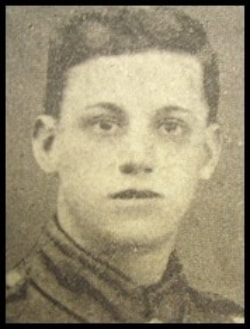
32502 Private
Harry Grimshaw
8th Shropshire Light Infantry
Killed in Action 31st August 1917.
Plot V. E. 7.
Lived at 294 Barden Lane, Burnley, Lancashire.
Harry Grimshaw
8th Shropshire Light Infantry
Killed in Action 31st August 1917.
Plot V. E. 7.
Lived at 294 Barden Lane, Burnley, Lancashire.
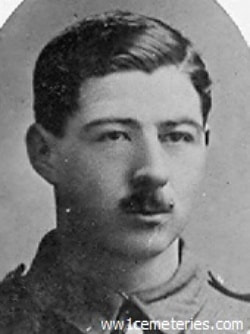
14524 Serjeant
John Paterson Hamilton
8th Bn. Royal Scots Fusiliers
19th September 1918, aged 23.
Plot V. A. 2.
Italian Bronze Medal. Son of James and Jessie Hamilton, of 2, Bardykes Rd., Blantyre, Lanarkshire.
His headstone bears the inscription "To Memory Ever Dear"
Remembered by James Hamilton Sadler of Ottawa, Ontario, Canada.
John Paterson Hamilton
8th Bn. Royal Scots Fusiliers
19th September 1918, aged 23.
Plot V. A. 2.
Italian Bronze Medal. Son of James and Jessie Hamilton, of 2, Bardykes Rd., Blantyre, Lanarkshire.
His headstone bears the inscription "To Memory Ever Dear"
Remembered by James Hamilton Sadler of Ottawa, Ontario, Canada.
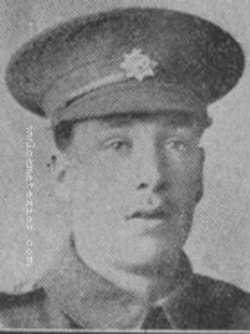
13862 Serjeant
W. H. Ingram
10th Bn. Devonshire Regiment
24th April 1917.
Plot VI. A. 21.
W. H. Ingram
10th Bn. Devonshire Regiment
24th April 1917.
Plot VI. A. 21.
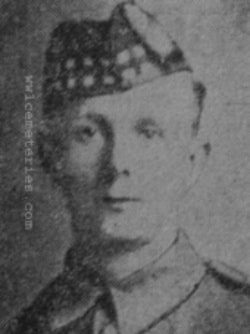
47718 Private
Albert Longbottom
8th Royal Scots Fusiliers
Killed in Action 19th September 1918, aged 25.
Plot V. F. 5.
Lived at 10 Green Street, Burnley, Lancashire
Albert Longbottom
8th Royal Scots Fusiliers
Killed in Action 19th September 1918, aged 25.
Plot V. F. 5.
Lived at 10 Green Street, Burnley, Lancashire
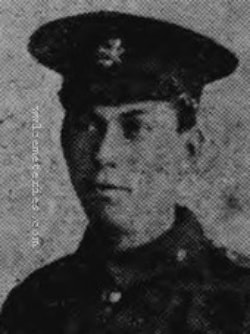
13732 Private
H. Perry
10th Bn. Devonshire Regiment
10th February 1917.
Plot VI. G. 3.
H. Perry
10th Bn. Devonshire Regiment
10th February 1917.
Plot VI. G. 3.
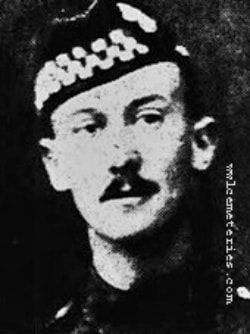
S/11938 Lance Corporal
P. R. Russell
12th Bn. Argyll and Sutherland Highlanders
19th September 1918.
Plot V. F. 3.
His headstone bears the inscription "All Is Well"
P. R. Russell
12th Bn. Argyll and Sutherland Highlanders
19th September 1918.
Plot V. F. 3.
His headstone bears the inscription "All Is Well"

